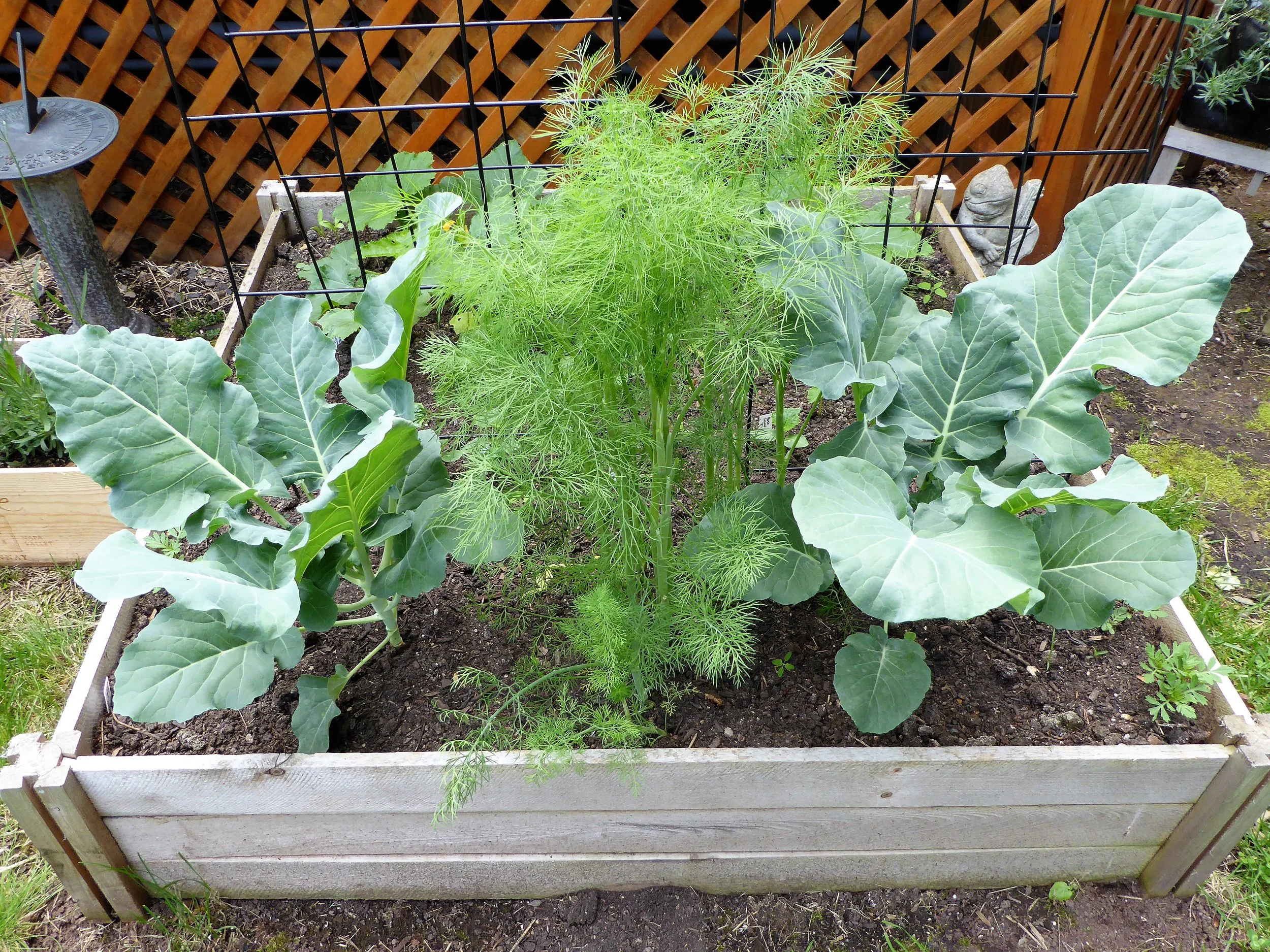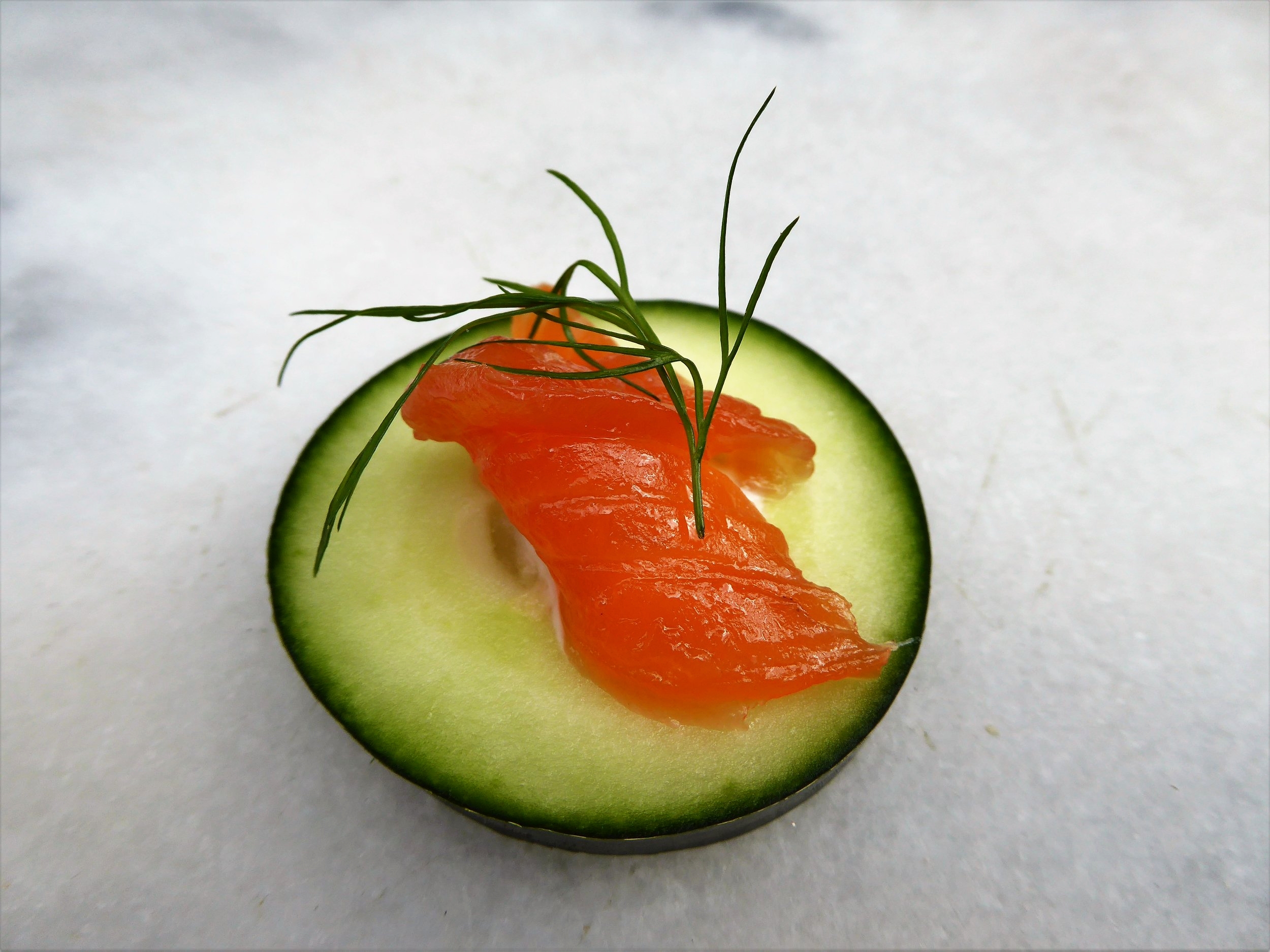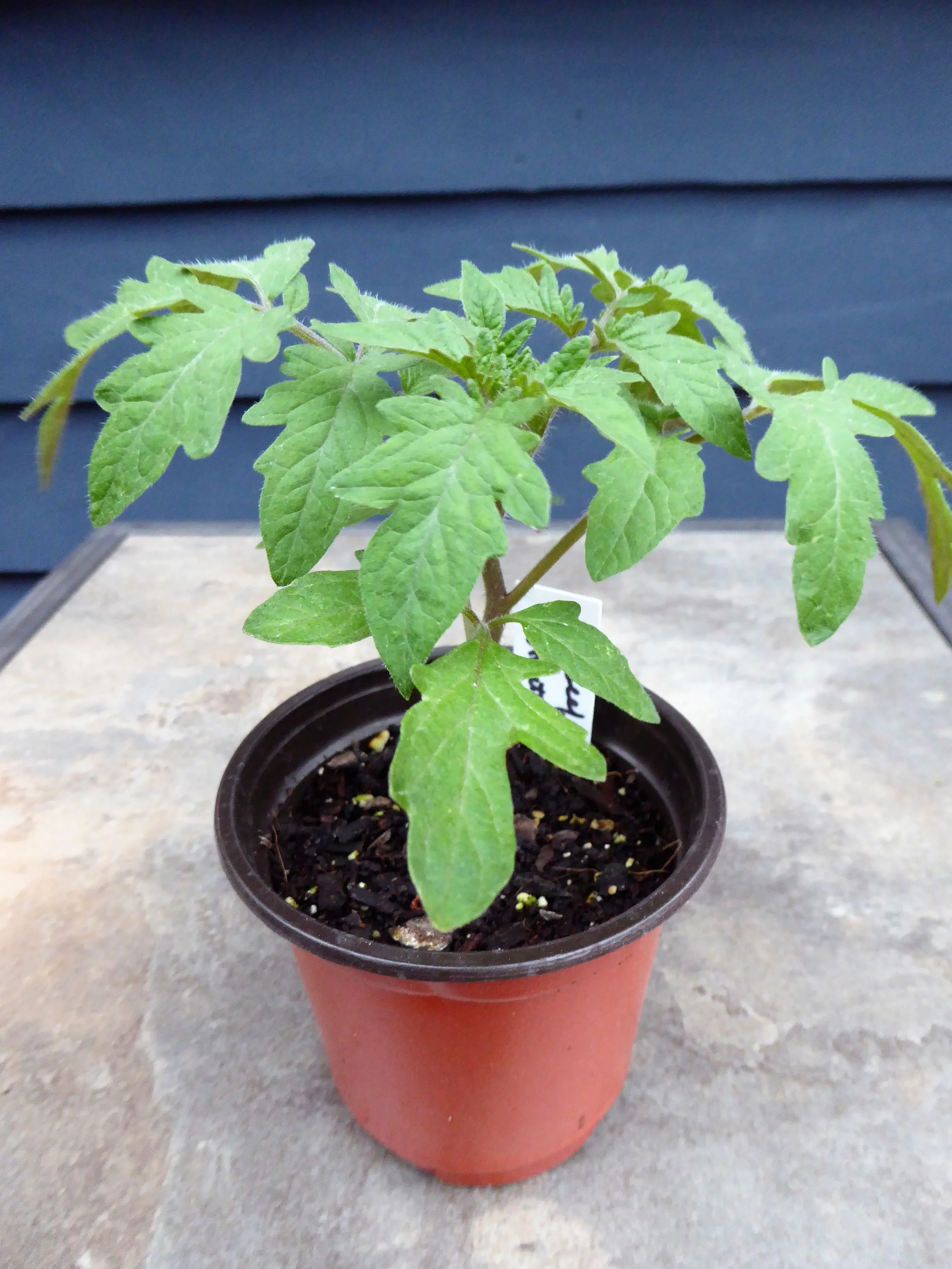Using Garden Dill to Make Gravlax
This is the first year in the garden I've successfully grown dill. I say this with some reluctance and embarrassment, as dill seems like something that should be easy to grow. But, for one reason or another, whether I grew it from seed or from a transplant, it just always remained thin and dried out. However, every year brings some kind of "first" for me and this time, it's successful dill. I grew some ahead of the season from seed under grow lights and bought a couple of transplants at the local garden club sale. Both are doing great. I planted some dill on its own in a winebox and also added some to the bed that contains broccoli, zucchini, and cucumber as it's a good companion plant.
Dill makes a great companion plant for broccoli
According to the University of Illinois Extension:
Dill is best planted with cucumbers and onions. During the cool season, plant it with lettuce. Dill attracts hoverflies and predatory wasps (good guys), and swallowtail butterfly caterpillars use its foliage as food. Tomato hornworms are also attracted to dill, so if you plant it at a distance, you can help draw these destructive insects away from your tomatoes. Dill repels aphids and spider mites. Try sprinkling dill leaves on your squash plant to repel squash bugs. But be forewarned: Dill re-seeds with a vengeance and takes over the garden in a hurry, so you need to cut the seed heads before they ripen.
Dill
Now that I have some great dill, I wanted to put it to good use. One of my favorite recipes is one for making gravlax that I learned in a cooking class I took in Montclair, NJ over 15 years ago.
Gravlax vs. Lox
Many of us are used to what often comes with a bagel, which is "lox." Lox traditionally comes from the belly of the salmon and is salt-cured for a long period of time. Gravlax is a traditional Scandinavian method of curing salmon using three main ingredients: sugar, salt and dill. It also has something that traditional lox doesn't have, which is the addition of various spices and it is only cured for 2-5 days. Neither lox nor gravlax are cooked, but they are cured, which is a traditional method of preserving food. You can make a fresh and delicious gravlax for brunch, hors d'oeuvres, or just as a treat at home for yourself. (I'll admit, it's been dinner for me almost every night this week, served simply with cucumber slices.)
Gravlax with Lemon Mint Crème Fraîche
I wish I could give credit for this recipe, but I honestly don't remember who ran the class, and it may have been associated with a restaurant that is no longer there.
Plan Ahead
Salmon needs to cured for at least 2 days. The longer it cures, the stronger the flavor, but don't cure for more than 5 days. (I cured mine for 4 days this time.)
- Buy a Center Cut Fillet
- Turn twice/day
- Remove long pin bones from fillets before curing. This will make it easier to cut.
- Plan on using a dish that is non-reactive such as glass or ceramic, and have something that can fit on top of the salmon with cans or jars of some sort to weigh it down while it cures. This draws out moisture and infuses flavors more quickly.
- If you're going to make the lemon mint crème fraîche, make it the day before you plan on serving the gravlax, if possible.
Ingredients
1 1/2 - 2 pounds center cut salmon fillet, with skin
1/4 cup kosher salt
1/4 cup sugar
2 tablespoons crushed black peppercorns
1 tablespoon crushed juniper berries
1 tablespoon crushed coriander seed
1 bunch dill
3 tablespoons gin
(Crème fraîche recipe follows below)
Directions
- Rinse salmon under cold water and pat dry.
- Combine salt, sugar, peppercorns, juniper and coriander in a small bowl.
- Place the salmon in a glass or ceramic dish (make sure it is non-reactive).
- Rub mixture on both sides of salmon and place the salmon skin side down.
- Top salmon with dill and gin and cover directly with plastic wrap.
- Weigh down the salmon with a plate or cutting board that fits over the salmon in in the dish and top with something heavy...jars, cans, boxes of almond milk.....something that will weigh down on the salmon lightly.
- Refrigerate 48 hours or up to 5 days, turning the fish every 12 hours and spooning the juice over the fish each time.
- To serve, discard the marinade and scrape away dill and spices. Pat dry. Place the salmon skin side down on a cutting board and cut into thin slices and remove skin. Arrange on a platter with lemon slices, dill, capers, chopped sweet onion, cucumber or whatever you'd like to have with it. Make the Lemon crème fraîche recipe below, if desired and spread it on dark bread with gravlax or serve on the side with the gravlax platter.
Weighing down the salmon will draw out the moisture
Refreshing cucumber is a great pairing for gravlax
I like to pre-slice gravlax before serving to make it easier for guests
Lemon Mint Crème Fraîche
Ingredients
1/2 cup crème fraîche
1/2 tablespoon fresh lemon juice
1 teaspoon grated lemon peel
1/4 teaspoon freshly ground pepper
Chopped fresh mint
Directions
- Combine all ingredients in a small bowl and cover the top directly with plastic wrap.
- Refrigerate overnight
- Transfer mayonnaise to a small serving bowl and sprinkle mint on top.









